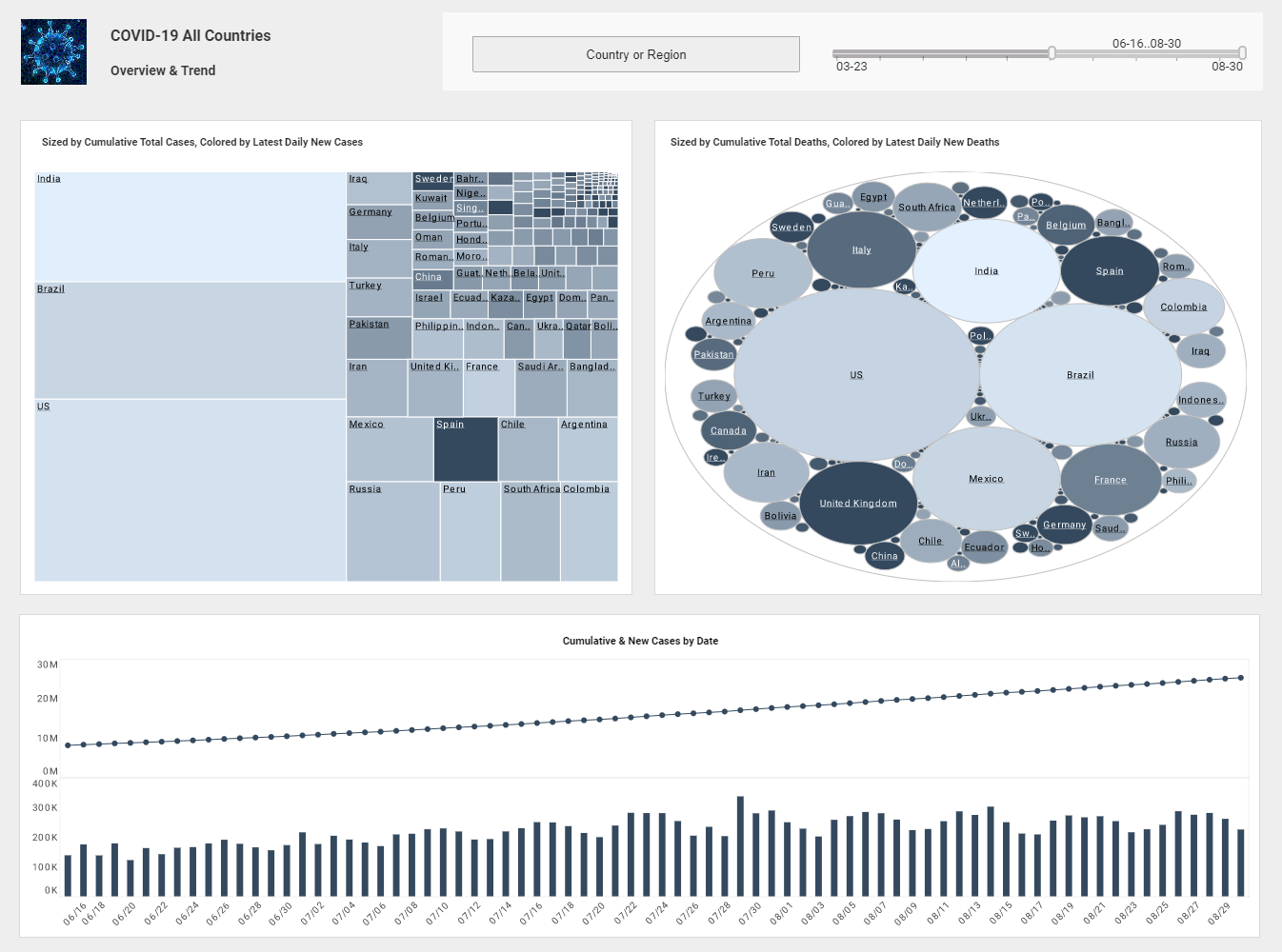Top Trends for Business Analysts
This is the transcript of a Webinar hosted by InetSoft on the topic of "Top Trends for Business Analysts." The speaker is Vivek Ramaswamy, Senior Business Analyst at InetSoft.
I would like to welcome you to today’s webinar, titled “Top Trends for Business Analysts.” The webinar will last for approximately 60 minutes including the Q&A session. So, make sure that you submit your questions in advance using the question’s feature in the webinar software.
I have got to admit it’s always fun to sort of pontificate what’s going on based on some of the experience that occurred to us over the year and reflect on them. I am sure a lot of questions will be spurred, and I will address a lot of these questions as we go on in the presentation, so stay tuned. Slides will be available afterwards as well.
So, without further ado I’d like to share with you our 10 key business analysis trends for the coming year. Also, as we go on we are going to be putting up poll questions, so there will be plenty of opportunity for you to voice your opinion and have a say in the webinar. So I am looking forward to hearing your responses to some of the questions we’ve loaded in, in the form of polls. Also I will do my best to answer questions as we go on fly.
They are an awful lot of you and one of me, so if your answers scrolls through and I miss it inadvertently, I do apologize in advance, I promise I will do my best to try and get to everybody’s questions.
| #1 Ranking: Read how InetSoft was rated #1 for user adoption in G2's user survey-based index | Read More |
The First Trend Is Organizational Efficiency
So, here we go, the Top 10 Trends. The first trend is organizational efficiency. And the trend reads like this: The demand for an in depth study of business architecture, business rules and business processes for the sake of operating with optimal efficiencies and leaner practices is putting the business analyst in the spotlight for the coming year.
Wow, that was an awful lot, and I can tell you really what I mean here is that the focus of business analysis is increasingly focusing on the practices of business versus technology. All over the world we have to acknowledge and recognize that nine times out of ten, solutions that our business analysts procure end up in the hands of our information technology friends or IT friends. What you’re seeing, and what I am seeing out there in the world with downsizing, budgets shrinking, resources shrinking, and organizations attempting to become more lean and more efficient, that the old adage of doing more with less is really the theme.
So, a lot of organizations that we are working with now are looking inwardly and assessing and evaluating how they are conducting business. They are wondering how to improve the practices of business and looking to find leaner, meaner, more efficient ways. This is causing business analysts to be asked to not so much focus on specification or the tiny detail.
Instead a huge energy and effort has been put on overhauling, assessing, and evaluating business rules, business processes and business strategies. Business rules, policies and procedures are becoming most sought after. How can we operate in an operable way? The other thing I am seeing too that will add to this a particular slide, organizations are even looking at things like solution development lifecycles and project lifecycles. How do we make those be leaner and meaner, and as you can probably guess one of the manifestations there is the advent of scrum and the growth of scrum as an adopted method within the organizations as well. So, I think all over organizations, whether it’s government or for profit, we are looking to operate at a more optimal efficiency. So, that’s trend number one.
 |
View a 2-minute demonstration of InetSoft's easy, agile, and robust BI software. |
Business Analysts in Government
Trend number 2. This is a really interesting trend, and it couldn’t have come at a better time. Now one of the themes that we’ve heard over the years in state and local federal government agencies, is that we just don’t have business analysts, and we don’t talk to them as business analysts. I can tell you not too long ago we ran a survey with some of our government customers here, and it’s true there are no business analyst types with the exception of one government agency that we are very near and dear, with and they do have them.
They went against the grain, and they have adopted IIBA standards. They have brought in some standard tools or methods. They have a business analysis center of excellence, and that was one of the two. We surveyed a good 15-20 of our customers, and a minority of that customer base that we surveyed actually knew the term and the language, the jargon, where business analysis is concerned.


